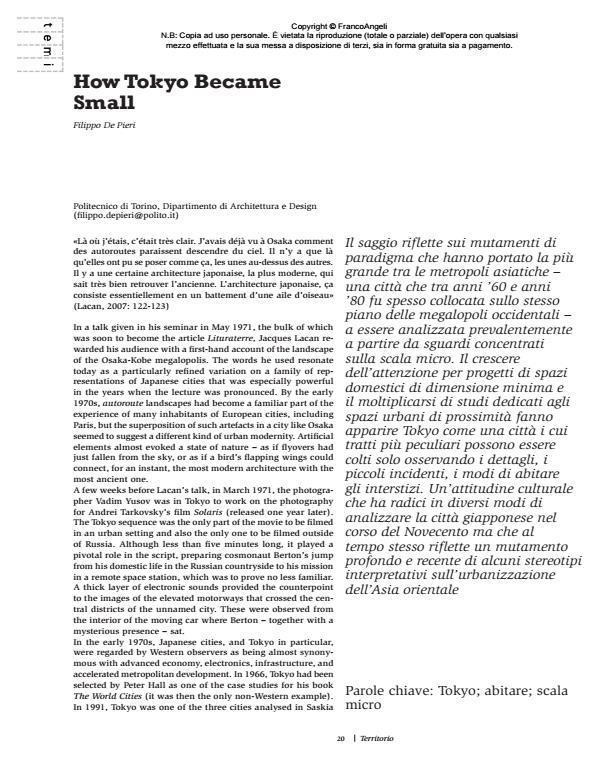How Tokyo Became Small
Titolo Rivista TERRITORIO
Autori/Curatori Filippo De Pieri
Anno di pubblicazione 2015 Fascicolo 2015/74
Lingua Inglese Numero pagine 10 P. 20-29 Dimensione file 666 KB
DOI 10.3280/TR2015-074003
Il DOI è il codice a barre della proprietà intellettuale: per saperne di più
clicca qui
Qui sotto puoi vedere in anteprima la prima pagina di questo articolo.
Se questo articolo ti interessa, lo puoi acquistare (e scaricare in formato pdf) seguendo le facili indicazioni per acquistare il download credit. Acquista Download Credits per scaricare questo Articolo in formato PDF

FrancoAngeli è membro della Publishers International Linking Association, Inc (PILA)associazione indipendente e non profit per facilitare (attraverso i servizi tecnologici implementati da CrossRef.org) l’accesso degli studiosi ai contenuti digitali nelle pubblicazioni professionali e scientifiche
Il saggio riflette sui mutamenti di paradigma che hanno portato la più grande tra le metropoli asiatiche - una città che tra anni ’60 e anni ’80 fu spesso collocata sullo stesso piano delle megalopoli occidentali - a essere analizzata prevalentemente a partire da sguardi concentrati sulla scala micro. Il crescere dell’attenzione per progetti di spazi domestici di dimensione minima e il moltiplicarsi di studi dedicati agli spazi urbani di prossimità fanno apparire Tokyo come una città i cui tratti più peculiari possono essere colti solo osservando i dettagli, i piccoli incidenti, i modi di abitare gli interstizi. Un’attitudine culturale che ha radici in diversi modi di analizzare la città giapponese nel corso del Novecento ma che al tempo stesso riflette un mutamento profondo e recente di alcuni stereotipi interpretativi sull’urbanizzazione dell’Asia orientale
Parole chiave:Tokyo; abitare; scala Micro
Filippo De Pieri, How Tokyo Became Small in "TERRITORIO" 74/2015, pp 20-29, DOI: 10.3280/TR2015-074003